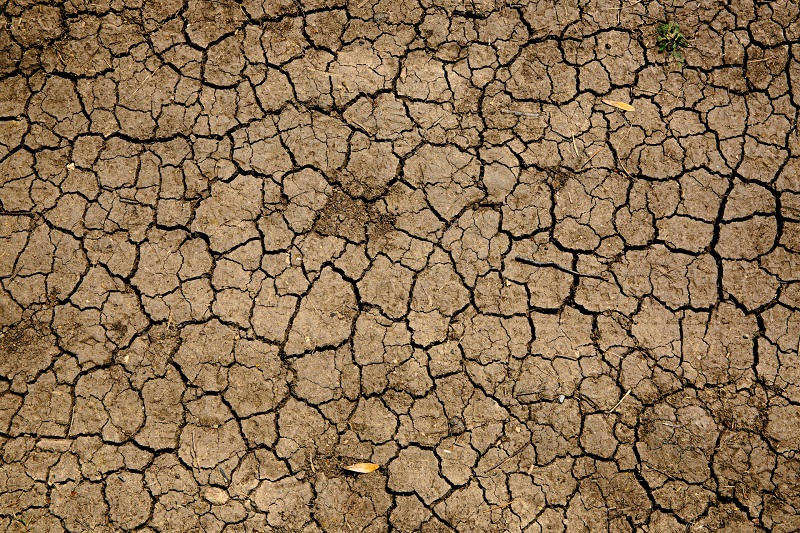ISABEL RUBIO ARROYO | Tungsteno
More than two billion people were living in countries with water shortages in 2021, according to the World Health Organisation (WHO). The situation will worsen in some regions due to climate change and population growth.
With technological advances reducing energy costs and environmental impact, desalination is presented as a possible solution to provide drinking water from the sea. To mark World Water Day on 22 March, we look at the most efficient technologies to mitigate the droughts of the future.
97% of water is in the ocean
Safe and easily accessible water is important for public health, whether it is used for drinking, domestic use, food production or recreation, as the WHO points out.
"It is necessary to be efficient in the use of water, to reuse every last drop and, finally, to supplement it with desalinated water," says Domingo Zarzo Martínez, president of the Spanish Association of Desalination and Water Reuse (AEDyR) and Director of Innovation and Strategic Projects at Sacyr Agua.
About 97% of the planet’s water is in the ocean, according to the US National Oceanic and Atmospheric Administration. The remaining 3% is distributed in many different places, including glaciers and ice, below the ground, in rivers and lakes and in the atmosphere.
Zarzo stresses that "we have an inexhaustible source of water that is not dependent on climatic conditions." "Therefore, the use of non-conventional resources such as desalination and reuse will go a long way towards solving water scarcity problems, and in fact is already doing so in many countries."
Intensifying droughts negatively impact water availability and quality. Credit: Sacyr
Desalination plants to combat droughts?
According to Zarzo, desalination plays a fundamental role in the fight against water scarcity. In countries such as Spain, the implementation of large desalination plants has served to "supply the Mediterranean coast with water in a safe and stable way, not only for the production of drinking water, but also for agricultural and industrial uses.
" Even so, the expert insists that the capacity is not sufficient and that new infrastructure must continue to be planned to meet current and future demand. There are 20,000 desalination plants around the world. Apart from Spain, other countries with large desalination programmes include Israel, Algeria, Australia and Saudi Arabia.
The main advantage of desalination is that it creates a new water resource from the ocean, which is an inexhaustible source and not dependent on the climate. According to Zarzo, desalinated water has "an exceptional quality and purity because the membranes prevent any kind of pollutant from entering it." It is also possible to add minerals, vitamins, electrolytes or any other necessary component to create water that is tailored to any use. In other words, "water à la carte".
"On the other hand, by using desalinated water in cities, the wastewater produced will have better characteristics (including lower salinity) for reuse," he says.
One of the drawbacks of desalinated water is that it can be more expensive than other conventional water sources. "This is a misconception, because with drought and climate change, conventional resources are becoming increasingly depleted and polluted, so these prices will even out," says Zarzo, who stresses that "there is no more expensive water than that which you don't have."
Desalination plants use a process called reverse osmosis to remove salt from seawater. Credit: Sacyr Concessions
The challenge of minimising environmental impact
The desalination of seawater produces brine, a liquid with a high concentration of salts and a negative environmental impact. "One of the aspects that most concerns the population is the discharge of the concentrate into the sea, but if this is done correctly, it has been scientifically proven that the environmental impact is totally irrelevant and, thanks to prior dilution and diffusion systems, this concentrated seawater is indistinguishable from normal seawater just a few metres from the discharge point," he says.
The decarbonisation of desalination plants is also a key challenge. Their energy consumption, especially if based on non-renewable sources, generates carbon dioxide emissions and contributes to climate change. Desalination plants are powered by conventional electricity grids, so their indirect emissions depend on the national energy model.
Zarzo points out that the desalination industry has made great efforts to improve the sustainability of plants: "In fact, almost all R&D is focused on this, from the production of renewable 'blue energy' generated by the salinity gradient between brine and freshwater, to circular economy concepts such as the extraction of elements, salts and chemical compounds from brine (so-called brine mining)."
Beyond desalination, reuse is also important: "We need to consider reusing every last drop of wastewater. In fact, more water is already reused in the world than the amount that is desalinated." There are educational and cultural barriers that hinder some uses, such as using recycled water for the production of drinking water, although this has been done for many years in California, Singapore, Israel, the Netherlands and Namibia.
Harnessing the benefits of technology is key to combating future droughts and having a stable, high-quality water supply that is not dependent on the weather: "In developed countries, we are not aware of the privilege of having safe, quality drinking water available to us in our homes on a continuous basis."
Tungsteno is a journalism laboratory to scan the essence of innovation.
